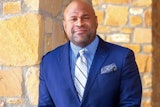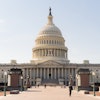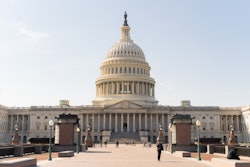OMAHA Neb.
The strength of NCAA Division II is that it strikes the right balance of academics and athletics in college life, and the 296 member institutions should be proud of that identity, the chairman of the Division II President’s Council says.
Pfeiffer University president Chuck Ambrose said he and other Division II leaders, concerned about schools leaving for Division I, have spent the past two years working to get the word out about the positives of Division II membership.
The goal, Ambrose said, is to find strategies that will draw schools into, rather than away from, Division II.
“Division II was feeling defensive,” Ambrose said. “We were defining ourselves as a division and membership in terms of what we’re not. We’re not Division I, but we offer a high level of academic and athletic competition. It’s not ‘A’ position to be in when you’re defining yourself by what you’re not.”
Division II presidents this year crafted a strategic positioning platform. The theme: Division II allows for the participation in high-level athletic competition without an overemphasis of sports in student life.
The focus, Ambrose said, should be on the college experience of the student-athlete. Too often in Division I, he said, student-athletes are looked upon as a means to an end that being greater revenue to continue feeding the monster of big-time athletics.
Ambrose said student-athletes not recruited by a Division I program were knocked for not being good enough.
“We were somewhat defined by the middle-child syndrome,” Ambrose said. “Division I was defined by the biggest of the big and the most selective and the elite of the elite. Division III was the purist model participation and opportunity in the least professional environment.
“In the grand spectrum, most institutions fall somewhere between those two ends.”
Still, since 2003, the allure of Division I has captured the imaginations of 22 former Division II schools.
A major reason schools go Division I is to receive more exposure for their athletic programs and, in turn, their institutions. Among the benefits is increased enrollment.
“Coming out of the 1980s, we could win a national championship in Division II with very fine athletes, very fine coaches and very fine programs, but the visibility that comes with those championships would have been very limited,” said Troy University chancellor Jack Hawkins, whose school moved to Division I in 1990.
Efforts have been made to create more exposure for Division II.
Cable network CSTV is televising regular-season football and basketball games this year.
A first-of-its-kind Division II sports festival was held last spring in Orlando, Fla., where national championships in lacrosse, tennis, softball and golf were contested.
Ambrose said he thinks some of those schools will return to Division II once they realize they can’t bear the high costs associated with Division I.
“We’ll become a destination division as institutions find appropriate balance,” he said.
Nebraska-Omaha Chancellor John Christensen, whose school decided to remain Division II, said he’ll be curious to see how new Division I members are faring in four or five years.
“I think some people are making the jump without all the financials in order. That story is yet to be told,” he said.
– Associated Press
© Copyright 2005 by DiverseEducation.com















